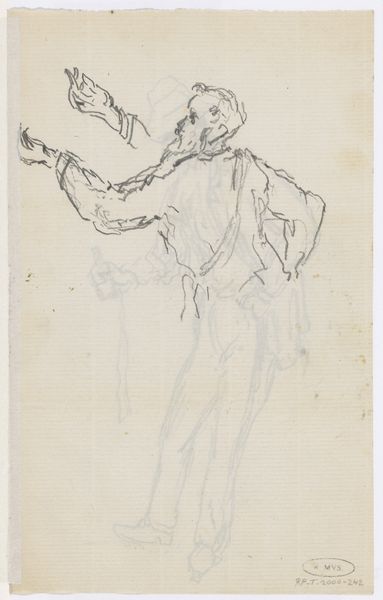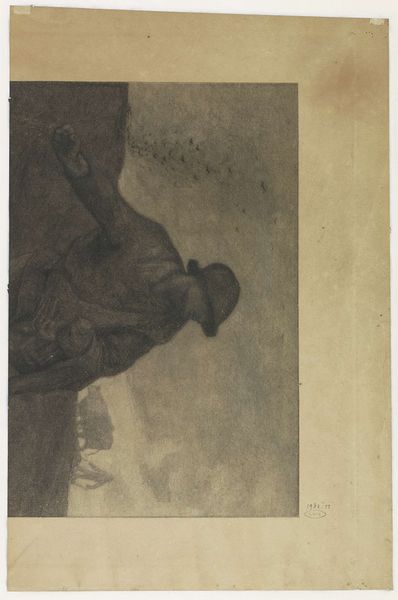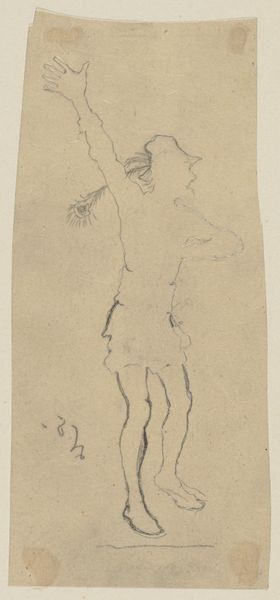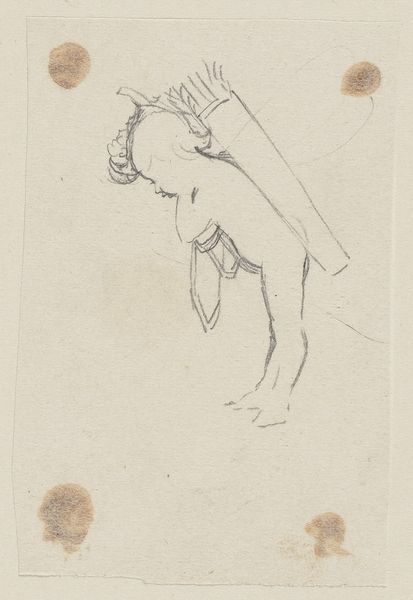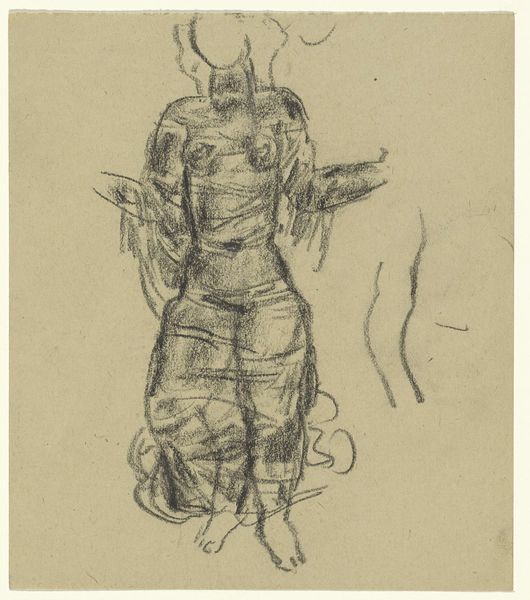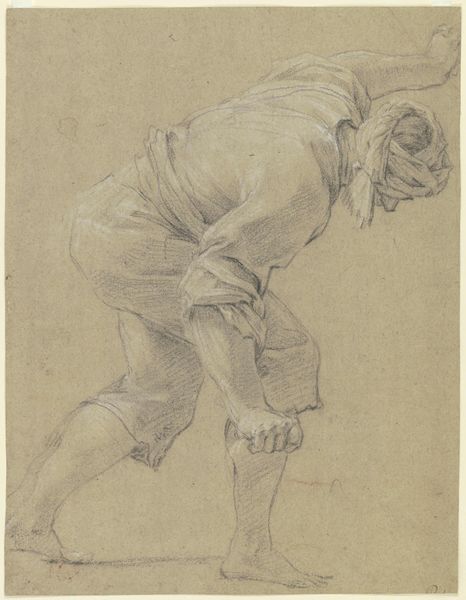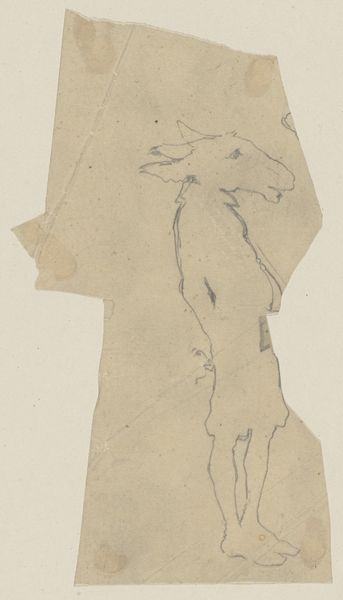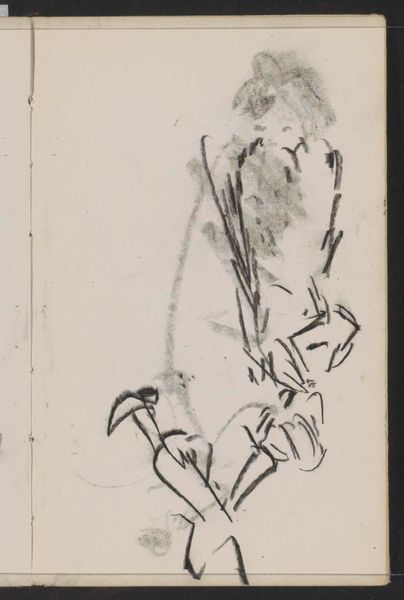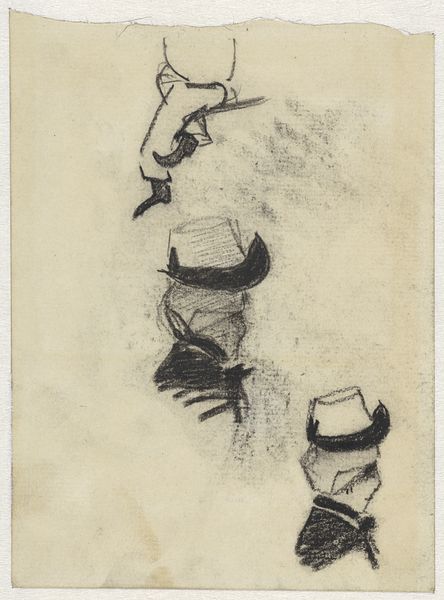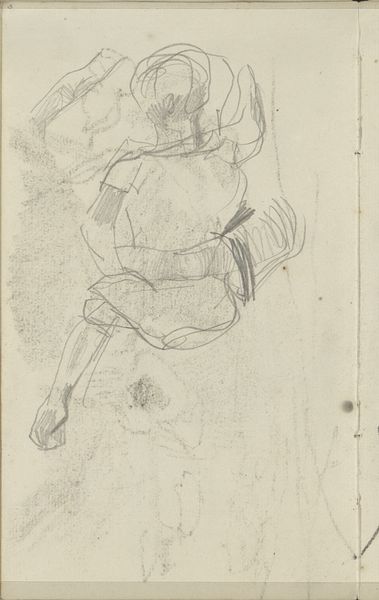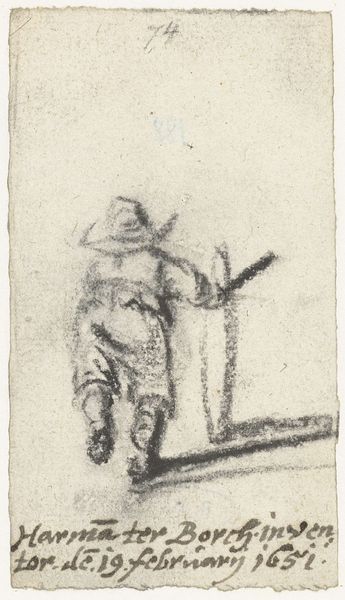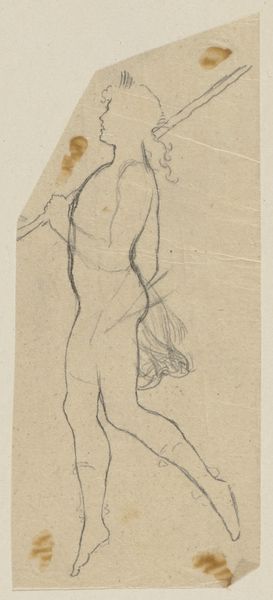
drawing, paper, ink
#
portrait
#
drawing
#
narrative-art
#
baroque
#
figuration
#
paper
#
ink
#
line
#
genre-painting
#
watercolor
Dimensions: height 130 mm, width 82 mm
Copyright: Rijks Museum: Open Domain
Curator: Look at this arresting drawing, believed to be from 1651, by Harmen ter Borch. It's titled, "Man die een zak op zijn rug draagt, naar rechts"—or "Man carrying a sack on his back, facing right." Editor: The starkness strikes me first. The minimal lines on this aged paper suggest something essential about labor, about burden. The browns and creams evoke earth and cloth. Curator: Exactly. Ter Borch, active during the Dutch Golden Age, captures the realities of everyday life for the working class. We see an individual, anonymous, yet also bearing witness to the socioeconomic disparities of the time. His body tells the story of exploitation and perseverance, resonating even today with so many populations. Editor: I’m drawn to how the economy of line communicates so much. The curve of his back, the texture implied in the sack, all achieved with what seems like very little ink. Was Ter Borch interested in drawing as a distinct art form here, apart from his paintings? It hints at an economy of means as its subject. Curator: He was interested in capturing the spirit of everyday people, in contrast with the prevailing trend for elevated subjects and idealised figures. This wasn’t about deities and heroes. Instead, we observe someone marginalized, made anonymous, who deserves as much of our focus. The act of seeing such laborers validates them. Editor: And the act of bearing such heavy burdens raises inevitable questions of material wealth. What are the contents of his sack? Is it fair recompense for the labor required? And does the rendering elevate that man into another class of objects and consumers. Curator: Right, the sack is central here, metaphorically containing societal values. As consumers, our gaze must interrogate how and why individuals find themselves bent double by economic disparities. This drawing urges us towards justice and toward disrupting these inequitable distributions. Editor: This sketch prompts more questions than it resolves. Its enduring strength is inviting viewers to reconsider labor itself as the ultimate medium by which all others are wrought. It also offers us pause for contemplation. Curator: For me, its strength lies in its representation of those previously excluded and in encouraging viewers to disrupt inequitable labor practice, so visible in even a fleeting, anonymous figure. Editor: Ultimately, these economical means expose so much more than we expect upon our initial viewing. It’s rather disarming.
Comments
No comments
Be the first to comment and join the conversation on the ultimate creative platform.
